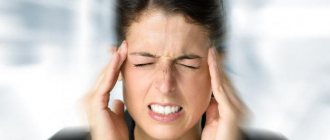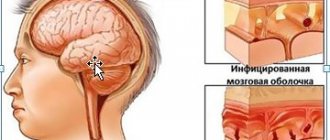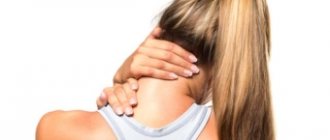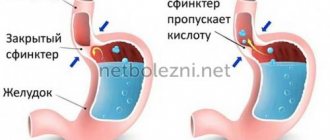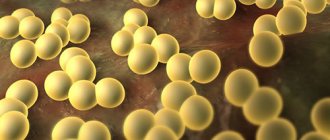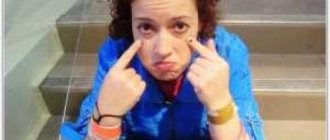What is balanoposthitis?
Balanoposthitis combines 2 diseases:
- balanitis An inflammatory process affecting the head of the genital organ in men;
- posts. This is an inflammation of the foreskin, which covers the head of the penis, performing a protective function.
The disease, without therapy, is complicated by the formation of pus and transition to a chronic form. Depending on the type of causative agent of inflammation, the pathology may be contagious. In a healthy organ, the foreskin is closely adjacent to the head of the penis. This structure allows you to protect the sensitive skin of the head from rubbing and infection.
To facilitate the sliding of the flesh over the head, the glands secrete a lubricating secretion, into which exfoliated, dead epidermal cells and urine residues fall. Without hygiene measures, the penetration of microorganisms occurs.
The environment between the head of the penis and the foreskin is favorable for the development and proliferation of infection, therefore the inflammatory process forms and progresses quickly, affecting the head and foreskin. Nearby tissues may also be affected.
Types of balanoposthitis
Based on the clinical course of the disease, doctors distinguish between acute and chronic balanoposthitis.
In this case, the acute disease occurs in the form of:
- simple inflammation;
- the occurrence of one or more areas of erosive lesions;
- development of gangrene.
In the latter case, the disease is very severe: severe swelling develops in the foreskin area, severe pain and purulent discharge appear. The patient has a fever and signs of intoxication.
The chronic form of the disease is:
- Ulcerative-hypertrophic. With this type of pathology, lesions appear in the form of ulcerations, which are very difficult to heal.
- Indurative balanoposthitis is quite rare, but nevertheless it is described in the medical literature.
Who is at risk?
Balanoposthitis in a child (a photo of the inflamed organ allows parents to recognize the disease in a timely manner) often develops before the age of 12. This age belongs to the risk group, since it is impossible to completely expose the head of the penis and wash away the secretion produced with all the contents in it.
Also, the immune system is not yet developed and does not have antibodies to fight certain pathogens.
Description of changes in the structure of the penis by age:
- from birth to 6 months, the foreskin is closely adjacent to the head of the penis, which prevents infection and accumulation of the lubricating segment. At this age, the development of balanoposthitis is extremely low. The formation of the disease is possible in the presence of damage to the foreskin due to rough washing or an attempt to expose the head;
- from 6 months to 5 years, the foreskin begins to move along the head of the penis, a small amount of lubricant is produced, in which dead cells and urine residues accumulate. But thorough washing of the head of the penis is impossible due to the narrowing of the foreskin and the impossibility of removing the head from it. The risk of developing balanoposthitis is maximum;
- From 5 to 12 years, the reproductive organ develops. The foreskin becomes more elastic and allows the head to be partially exposed. The likelihood of developing pathology is reduced;
- from 12 to 18 years old. The penis is fully formed. This allows you to fully perform hygiene procedures. A strengthened immune system protects against the development of infection. At this age, the risk of developing balanoposthitis is minimal.
The photo shows a schematic representation of the disease balanoposthitis in a child.
Additionally, the risk group includes men and adolescents with the following pathologies:
- the presence of diseases that provoke a decrease in the functioning of the immune system (AIDS, chronic pathologies, oncology). With weak immunity, the risk of developing an infection on the penis increases;
- diabetes. Excess glucose excreted in the urine creates a more favorable environment for the growth of microorganisms; in addition, the disease weakens the immune system and disrupts the condition of blood vessels;
- being overweight. Excessive sweating and metabolic disorders occur;
- exhaustion of the body due to illness or diet;
- lack of vitamins.
People at risk need to pay special attention to hygiene procedures.
Causes of the disease
The main cause of the development of the disease is the entry of a virus, bacteria or fungus into the area between the head and foreskin.
Provoking factors causing the development of balanoposthitis:
- poor hygiene of the reproductive organ;
- Wrong size underwear and diapers (smaller size). Rubbing of the penis occurs, including the head with the foreskin;
- spending a long time as a baby in diapers. The penis is exposed to a hot and humid environment for a long time;
- aggressive detergents that cause irritation of the foreskin and head of the penis;
- the presence of microtraumas and abrasions in this area. May occur as a result of increased exposure of the head in children under 5 years of age, during scratching or rough sexual contact;
- an allergic reaction on the penis caused by synthetic fabric underwear, detergents or laundry detergent;
- the presence of infectious skin pathologies;
- venereal diseases;
- frequent washing. As a result, the protective secretion is washed away. The reproductive organ remains unprotected from infection:
- improper washing of infants with residues of feces and pathogenic bacteria from the anus getting onto the head of the penis;
- improper development of the foreskin;
- frequent hypothermia or overheating;
- diseases of the urinary system of an infectious nature.
If hygiene measures are observed and the infection is eliminated in a timely manner, balanoposthitis does not develop.
Causes
Posthitis, balanitis and balanoposthitis in children of the first year of life occur due to poor hygiene. With physiological phimosis, a secretion—smegma—accumulates in the preputial space. This substance becomes a substrate for the active reproduction of pathogenic microflora.
Inflammation of the tissues in the distal area of the penis is caused by the following pathogens:
- bacteria (strepto- and staphylococci, Klebsiella, Escherichia, Pseudomonas aeruginosa);
- herpes viruses;
- candida fungi;
- mixed flora (viral-bacterial, fungal-bacterial).
Phimosis, skin irritation from diapers or diapers are the main reasons why balanoposthitis occurs in babies of the first year of life. Allergic contact dermatitis is common at this age. It is caused by contact of a baby's delicate skin with urine or care products.
The pathological process in the space between the inner layer of the skin fold and the head of the penis develops when pathogenic microflora enters the preputial space and the boy’s body is affected by provoking factors:
- decreased immunity;
- improper or insufficient hygiene of the genital organ in children;
- glucosuria in diabetes mellitus;
- obesity;
- skin friction against tight panties;
- use for washing powders, gels with aggressive surfactants;
- untimely changing of diapers for babies;
- lack of vitamins;
- psoriasis;
- hypothermia;
- masturbation;
- frequent use of detergents for washing (the natural protective film is washed off).
Physiological and pathological narrowing of the foreskin provokes the accumulation of smegma and urine residues in the preputial space. Favorable conditions are created for the life of microorganisms. Persistent inflammation leads to tissue swelling and scarring, which can cause paraphimosis and acute urinary retention.
Forms of the disease and symptoms of balanoposthitis in a child
Balanoposthitis in a child (the photo shows the severity of organ damage) can be recognized independently by the presence of characteristic symptoms:
- redness and swelling of the end of the penis, in particular the head and foreskin;
- pain may be present constantly and intensify with urination;
- Along with the pain there is a burning sensation and itching. Infants signal these symptoms by crying and worrying, without other reasons;
- There may be a white coating, curdled discharge or purulent masses on the foreskin and the glans itself. Depends on the severity of the disease and the type of pathogen;
- additionally, an unpleasant purulent or sour odor occurs;
- in an advanced form, microcracks, erosive formations and a red rash can form on the affected area;
- it is possible to increase the temperature and enlarge the lymph nodes in the groin area. It is observed in a severe form of the disease;
- Up to 12 years of age, enuresis may be present. Because of pain during urination, children are afraid to urinate and endure it until the evacuation of urine occurs spontaneously.
The symptoms of the disease vary depending on the form of the disease:
| Forms of balanoposthitis | ||
| Acute | Chronic | Specific |
| It manifests itself as severe swelling and redness of the head and foreskin. It is possible to increase the temperature to 39 degrees. The pain is constant and intensifies when the bladder is emptied. | Characterized by periodic intensification and subsidence of symptoms. The pain may be of moderate severity. More often there is itching and burning due to peeling of the epidermis on the head and flesh. Due to the dryness of the skin, cracks form, which are difficult to eliminate. After the wounds heal, scars form, which lead to a narrowing of the foreskin and the impossibility of completely exposing the head. From the genital organ there are various discharges from clear mucus to curd masses. | The disease develops due to the penetration of bacteria. Based on the type of pathogen, this form of balanoposthitis is further divided. |
| Subtypes of forms | ||
| Simple. The inflammatory process is mild (slight redness and slight swelling). The temperature does not rise. There may be clear mucus discharge from the penis and pain when urinating. | Erosive-necrotic. It is expressed by the formation of erosions due to the development of non-healing cracks. | Tuberculous. The disease develops as a result of the development and reproduction of the tuberculosis bacillus on the genitals. |
| Purulent. Accompanied by the formation and discharge of pus. Redness and swelling are pronounced. The temperature rises to 39 degrees. The patient's general condition deteriorates sharply. | Herpetic. The disease is caused by the herpes virus. | |
| Erosive. It is characterized by the formation of ulcers and erosions on the head of the penis and foreskin. It is difficult to treat due to the constant contact of urine on the wounds. | Chlamydial. The causative agent is chlamydial infection. | |
| Necrotic. Is the most dangerous. Tissue death occurs. | Syphilis. Balanoposthitis is caused by the development and reproduction of the causative agent of syphilis on the head and foreskin. | |
| Gonorrheal. Disease caused by gonococcus. | ||
Balanoposthitis can have a primary form (the development of the disease is triggered by infection due to non-compliance with hygiene measures) and a secondary form (the pathology is caused by existing infectious diseases).
Balanitis in newborns
Newborn boys suffer from balanoposthitis quite often. Painful sensations arise from inflammation, accompanied by swelling of the head of the penis. The emerging disease is caused by harmful microorganisms, such as Candida fungus, Protea fungus, staphylococcus, E. coli, located in the intestines on the child’s skin.
The genital organ of a newborn is significantly different from the male penis of an adult. For some time after birth, the member of a newborn baby is a single whole. The head cannot be opened; it is completely connected to the penis. This fact indicates that boys are born with phimosis.
Self-intervention by parents is often accompanied by tears in the skin, allowing infections to penetrate deeper. In most cases, the intervention of caring mothers can lead to purulent balanoposthitis in the child. The appearance of balanitis is also provoked by: foam baths with irritating agents, infrequent changing of diapers.
Symptoms of inflammation in a newborn boy are: redness, swelling, sometimes the head of the penis turns blue, and rashes occur. A serene baby becomes fussy and capricious. When changing diapers, the mother discovers diaper rash in the folds of the skin, which cannot be eliminated with creams and powders. Balanitis can also affect the oral cavity.
Attention! Stomatitis can cause inflammation of the genital organs in newborn babies.
Possible complications and consequences
Balanoposthitis is a dangerous disease, especially in childhood. In severe cases of the pathology, scar formation and narrowing of the foreskin may occur. These changes will not allow you to have a full sex life. The likely consequences of the disease are confirmed by numerous photographs.
Possible complications in the absence of therapy:
- decreased sensitivity of the head, which negatively affects potency and quality of sexual intercourse;
- infection enters the urinary system through the urethra, as well as into the prostate gland;
- infection of a sexual partner with an infection that causes the development of balanoposthitis;
- disruption of the blood vessels of the penis, with further development of impotence. Perhaps with a very advanced form;
- inflammation of the spermatic cords with subsequent deterioration in sperm quality and the development of infertility;
- development of gangrene or malignant tumor;
- infection enters the blood and spreads throughout the body.
Consequences can develop in both adult men and children. Therefore, timely treatment of pathology is important at any age.
Complications
Although balanoposthitis can hardly be called a serious disease, complications can occur if left untreated. As a rule, they are noticeably more serious than simple balanoposthitis.
These include:
- cicatricial phimosis is a consequence of chronic balanoposthitis, when constantly irritated skin is replaced by scar tissue. The latter does not stretch, which makes it impossible to expose the head;
- infection from the head of the penis easily passes into the urethra and higher, which leads to the appearance of various diseases of the genitourinary area;
- If the disease is ignored, balanoposthitis can develop into an erosive chronic form. In this case, the wounds that appear on the head of the penis are very sensitive. It is difficult to cure this form, and it creates very strong discomfort;
- prolonged inflammation causes a decrease in the sensitivity of the head, and in the future this results in problems with potency;
- lack of treatment can lead to a necrotic form of balanoposthitis, which poses a serious danger.
Balanoposthitis in children is a very common disease associated with the physiological characteristics of little boys. With age, the risk of the disease decreases. Balanoposthitis can be treated quite easily and quickly, but only if it has not become chronic. In the video about the causes, symptoms and treatment of balanoposthitis in children:
Diagnostics and tests
To confirm balanoposthitis, a diagnosis from a urologist is required. Examination sequence:
Collecting information from the patient:
- when did the development of the inflammatory process begin and what preceded it (sloppy washing, incorrectly selected underwear, rough sexual games);
- the presence of infectious skin diseases or venereal diseases, including in close relatives, since the pathogen can be transmitted through personal hygiene items and bedding;
- Are there any chronic pathologies that cause decreased immunity;
- what additional symptoms are present (itching, burning, enuresis).
Penis examination:
- the severity of the inflammatory process (redness, swelling) is determined;
- the presence of erosions and cracks is revealed;
- the condition of the skin is checked for peeling;
- the presence of discharge and its characteristics (color, consistency, smell) are determined;
- palpation of the organ and nearby tissues for pain.
- Collection of urine and blood tests to identify the pathogen and check the general condition of the body.
- Collection of secreted mucus. To determine the presence of a pathogen inside the penis.
- Determination of infection of the urinary system, testicles and spermatic cords. It is performed using ultrasound and additional collection of tests.
If you have sexually transmitted diseases or infectious skin pathologies, consultation with a venereologist and dermatologist is required.
Drug treatment
Balanoposthitis in a child (the photo later in the article shows the step-by-step recovery process) is eliminated effectively and without the development of complications when using medications. Therapy consists of the use of antibiotics and symptomatic agents orally and externally.
| Names of drugs and release form | Age parameters | Rules for the use of medications |
| Oral antibiotics | ||
| Cefazolin (powder) | After 1 month from birth | The dosage is calculated according to the weight and severity of the disease. Therapeutic course is 7-10 days. |
| Amoxiclav (suspension, tablets) | Has no restrictions | The dosage and course of treatment are determined individually. |
| Cefixime (powder and tablets) | After 6 months | The daily dose is calculated according to the patient's condition. Duration of treatment is 7-10 days. |
| Ointments and creams containing antibiotics | ||
| Levomekol (ointment) | After a year | The product is applied once a day to the affected area for 4-7 days. |
| Baneocin (ointment and powder) | Use in children is permitted after consultation with a doctor. | The drugs are used 2-4 times a day for 7-10 days. |
| Oflokain (ointment) | Apply the product 1-3 times a day. The duration of therapy is selected individually. | |
| Antiseptic solutions for washing the glans and foreskin | ||
| Miramistin (solution) | After 3 years | Used 3-4 times a day for 4-10 days. |
| Furacilin (tablets and alcohol solution) | no restrictions | A tablet or alcohol solution is used 4 times a day for 5-7 days. |
| Chlorhexidine (solution) | In childhood, use is possible only with the permission of a pediatrician. | Treat the skin 1-2 times a day for 10 days. |
| Anti-inflammatory ointments and creams | ||
| Prednisolone (ointment) | After 2 years | The composition is applied 4-6 times a day for 10-14 days. |
| Betamethasone (ointment) | After 2 years | The ointment is used 1-2 times a day. Duration of treatment is 7-14 days. |
| Creams and ointments to speed up skin recovery | ||
| Panthenol (spray and ointment) | No limits | The product is used 1-3 times a day until the pathology is eliminated. |
| Bepanten (cream and ointment) | No restrictions | The composition is applied 1-2 times during the day. The course is determined individually. |
| Sudocrem (cream) | From birth | Use up to 6 times a day until the pathology is eliminated. |
| Antifungal ointments | ||
| Clotrimazole (cream, gel, ointment) | After 12 years | The products are used 2-3 times a day for 3-5 days. With the doctor's permission, the course of treatment can be extended to 28 days. |
| Miconazole (cream, gel) | Can be used in childhood with the permission of a pediatrician | Apply 2-4 times a day for 14-40 days |
| Antifungal tablets (prescribed for advanced cases) | ||
| Fluconazole (tablets, capsules) | After 5 years | The daily dosage is selected according to the severity of the disease. Duration of therapy is 10-14 days. Extension up to 30 days is allowed. |
| Oronazole (tablets) | After 3 years | Tablets are taken once a day for 10-20 days. The dosage is calculated individually. |
| Terbizil (tablets) | After 2 years | The prescribed single dosage is taken 1 time per day for 14-28 days. |
| Oral antihistamines | ||
| Suprastin (tablets) | After 3 years | The course of treatment is selected individually. Overdose may cause cardiac arrest. |
| Zyrtec (tablets and drops) | After 6 months | The daily dosage is selected according to age. Duration of therapy until allergy symptoms are eliminated. |
| Fenkarol (tablets) | After 12 years | Prescribed 1-2 tablets 3-4 times a day for 10-20 days. |
| Hormonal ointments (for severe balanoposthitis) | ||
| Lokasalen (ointment) | In childhood, used only as prescribed by a specialist. | The composition is applied 1-2 times a day for 7-10 days. |
| Elokom (cream, ointment) | After 2 years | The drug is used once a day. Duration of therapy is 7-10 days. |
| Celestoderm (cream and ointment) | After 6 months | The composition is applied 1-2 times a day for 7-14 days. |
| Immunoboosting oral agents | ||
| Alphabet (tablets) | After 18 months | Take 3 tablets for 30 days. |
| Vitrum (tablets) | After 12 years | Take 1 tablet for 30-60 days. |
| Complivit (tablets) | No restrictions | Take 1 time per day for 30 days. |
| Antipyretics | ||
| Paracetamol (tablets, syrup, suppositories) | No limits | The daily dosage is selected individually. Take for 5-7 days. |
| Ibuprofen (tablets, suppositories and syrup) | After 3 months | The course of treatment is prescribed individually according to the patient’s condition. |
| Panadol (tablets and syrup) | After 3 months | |
During treatment, it is important to change linen daily. Before using external products, hands are thoroughly washed with antibacterial soap. All medications are prescribed by the treating specialist. Self-medication is dangerous due to the development of complications.
Treatment
Acute balanoposthitis is treated quite quickly. In the early stages, the course can be limited to medicinal baths and lotions. Chronic is almost impossible to heal. In the vast majority of cases, they resort to a surgical solution to the problem. The purulent form requires the use of antibiotics.
Specific balanoposthitis is treated only in combination with the primary disease.
Medication
Most often, balanoposthitis is treated at home, unless surgery is required or the patient’s condition does not cause alarm. In most cases, external drugs are used.
The area of the head and foreskin, and, if possible, the preputial sac is treated with creams and ointments. Their nature depends on the form of the disease and the infectious agent:
- if the inflammation is not accompanied by an infection, then anti-inflammatory ointments are sufficient: prednisolone, betamethosone;
- if balanoposthitis is caused by bacteria, then levomekol, syntomycin, oflocaine are used;
- if the disease is of fungal origin, clotrimazole, lamicon, lamisil are prescribed. Sometimes combination drugs, like Triderm or Trimistin, are required if the inflammation is of a complex nature.
- For high fever or severe pain, the course includes non-steroidal anti-inflammatory drugs: ibuprofen, ibufen, paracetamol.
- If a child falls ill with a purulent form of balanoposthitis, then antibiotics are prescribed: amoxiclav, cefix, azithromycin. If the disease is of fungal origin, fluconazole is prescribed.
Chronic balanoposthitis is very difficult to treat with medication. As a rule, after completing the course, if this is still possible, an operation is prescribed - circular excision of the foreskin. In the most severe cases, skin grafting is performed to expand the foreskin ring.
Folk
These include therapeutic baths with antiseptic, anti-inflammatory and sedatives. Baths must be combined with medications. Mild forms of the disease can be treated only with baths and gauze lotions.
- The simplest and most accessible method is a sitz bath with a solution of potassium permanganate. The water should be pale pink. Bath temperature – +36-37 C. The bath is used once a day. You can make lotions from the same solution: soak gauze in potassium permanganate and apply to the penis 2-3 times a day.
- Furacilin solution has a good antiseptic effect and reduces inflammation. For a bath, dissolve 2 tablets in 250 ml of boiled water.
- To relieve itching and inflammation, baths with a solution of chamomile or oak bark are very good.
- Dioxidine, betadine, and dekasan can also be used as a preparation for lotions.
A treatment course at home will only lead to healing if it is accompanied by careful adherence to hygiene rules.
Folk recipes
Folk remedies are allowed to be used for preventive purposes and at the final stage of treatment. Before use, permission from the attending physician is required, as the composition may cause an allergic reaction and deterioration of the general condition.
Folk remedies used:
- Boil 15 g of dried chamomile raw materials in 1 liter of water for 15 minutes. Strain and dilute with 1 liter of water to a temperature of 37 degrees. Take sitz baths for 20 minutes for 10 days;
- Infuse 10 g of dried sage in 500 ml of boiling water. Wipe the inflamed areas with the composition 3 times a day for 14 days;
- Boil 30 g of dried string composition in 1 liter of water for 20 minutes. Strain and add the mixture to the bath. Take water procedures for 20 minutes for 7 days;
- wipe the affected area with olive oil in the evening until the skin is completely restored;
- Treat the skin with freshly squeezed aloe juice 2-3 times a day for 7-10 days.
Before using folk formulations, you need to carefully wash the head of the penis and foreskin with boiled water or disinfectants.
Prevention
The main preventive measure is compliance with the rules of personal hygiene. Parents are obliged to promptly remove waste products from the genitals and anus of their child. The boy must be washed at least once a day. Water procedures are advisable after each bowel movement.
After bathing, you need to carefully remove moisture from the child’s body. For the same reason, parents need to change diapers in a timely manner, which should be worn as indicated in the photo in the instructions. If your newborn is bathed more than once a day, you should not use soap every time you wash. If diaper rash and redness appear in the genital area, you should use special baby powders and creams.
To protect the child from possible inflammatory processes, it is necessary to use hygiene products intended for children: baby soap, shampoo, cream, etc. To wash children's underwear, you also need to use special powders.
In case of allergic balanoposthitis, Dr. Komarovsky recommends that parents be attentive to the appearance of unfamiliar objects in the child’s life. Not only food or soap, but also vitamin complexes for children can cause a negative reaction in the body. Dr. Komarovsky recommends not using diapers indoors during the warmer months. It is advisable that the child is not dressed below the waist.
Drinking enough water is also an effective prevention of balanoposthitis. A child under one year old should receive at least 0.3 liters of fluid daily. Older children should drink at least 1 liter.
Physiotherapy
Balanoposthitis in a child (the photo allows you to recognize the disease at an early stage) in a mild form can be eliminated with the use of physiotherapy.
Prescribed procedures:
- laser radiation. It helps reduce pain and swelling. Additionally, the procedure accelerates tissue renewal and restoration. For treatment, laser waves of a certain wavelength and radiation frequency are used;
- UHF. The electromagnetic field eliminates inflammation and swelling. By normalizing blood circulation, the process of skin cell regeneration is accelerated;
- magnetotherapy. The magnetic field disinfects the affected area and accelerates the restoration of the epidermis. It is also used for severe forms and in the presence of purulent discharge.
- electrophoresis. Using current and a compress with a medicinal composition, medications are administered subcutaneously;
- ozone therapy. Allows you to destroy the causative agent of inflammation and strengthen the immune system.
The procedures are recommended for children over 7 years of age.
Surgery
In the chronic course of the disease or with the development of erosive formations, it may be necessary to remove the foreskin from the penis. After its elimination, the lubricating secretion will not accumulate on the head of the penis, which will worsen the conditions for the development of microflora.
The procedure is carried out after the signs of inflammation have subsided.
Also, removal of the foreskin (complete or partial) is performed when it is impossible to expose the head in adult men. Before the operation, an examination is carried out to exclude contraindications. Allowed for children from 2 months.
Therapeutic drug tactics
Patients with primary phimosis and symptoms of foreskin pathology should be offered conservative treatment as a first line of therapy in the form of a course of topical steroids 1-2 times a day for 4 to 8 weeks. The success rate with corticosteroid ointment or cream is >90%. With local long-term therapy in studies, the hypothalamic-pituitary-adrenal axis was not involved and no increase in blood cortisol levels was detected. Histological evaluation reveals significant differences in collagen organization and elastic fiber system when comparing the treatment group with the control group. When using steroids, a technique is used to gently stretch the foreskin with advancement of 1-2 mm per week, which is carried out at home by trained parents.
It is worth noting that there is no consensus in the literature whether topical steroids are more effective than preputial manipulation and stretching alone. The effect of corticosteroids may be short-lived and the expected relapse rate is up to 17%, but even short-term improvement can be considered a favorable prognostic factor for the spontaneous resolution of phimosis during puberty. Treatment with topical steroids has no effect on balano-preputial fusions.
Diet food
During the period of development of balanoposthitis, and for 30 days after recovery, dietary nutrition is required. Dishes and foods with a high glucose content, as well as fatty and spicy foods are excluded. These products create favorable conditions for the development of infection on the penis.
Sugar is released in urine and ends up on the head of the penis. And spicy and fatty foods change the composition of sweat. Additionally, you need to drink up to 1.5 liters of clean water per day and eat more fresh vegetables and fruits to strengthen the immune system. If you are overweight, a low-calorie diet may be prescribed.
Folk remedies
Photo: oprostatite.info
Disinfecting baths for balanoposthitis.
Baths with furatsilin. Furacilin is an over-the-counter pharmaceutical product that has proven itself in the treatment of external infections. Used for stomatitis, for compresses for pustules on the skin, paronychia. In this case, diluted in water at room temperature.
Dioxidine baths. A 1% solution of dioxidine is used externally for erosive and ulcerative forms of balanoposthitis.
Soda baths. Baking soda baths are used only in cases where antibiotic treatment is not prescribed.
When using baths, the average time of use is 5-10 minutes. If any signs of an allergic reaction appear (itching, rash, swelling), you should immediately stop using this product and consult your doctor about replacing it.
Herbal applications and compresses
Use the pulp of an aloe leaf: apply to the site of inflammation for 10-15 minutes. It is possible to grind the pulp to a homogeneous mass and use the resulting pulp as a compress or application. Make a fresh batch each time
The plantain, previously washed, is also crushed into a homogeneous mass and applied to the inflamed area for 30 minutes, after which it should be replaced with a fresh leaf. It is recommended to repeat at least 5 times a day.
Decoctions and infusions
Decoctions are prepared from chamomile, currant leaves, lingonberries, cranberries, burdock root, and water kras. They are suitable both for oral use in equal portions throughout the day, and for baths. It must be remembered that it is better to use herbal decoctions freshly prepared, remembering to let them cool, rather than preparing them immediately for a week in advance. Decoctions left standing for a long time lose their medicinal properties.
The information is for reference only and is not a guide to action. Do not self-medicate. At the first symptoms of the disease, consult a doctor.
Forecast
With timely treatment and compliance with doctor's prescriptions, balanoposthitis is cured within 10-14 days. In severe cases, treatment may take up to 90 days. There are no complications with a mild form of the disease.
Balanoposthitis most often develops in children from 6 months to 5 years due to anatomical features. But if hygiene measures are observed, this disease does not develop. Timely treatment allows you to avoid the development of complications and completely eliminate the pathology in the child. Photos allow you to recognize the disease at an early stage.
Author: Kotlyachkova Svetlana
Diagnostics
Without knowing which doctor treats balanoposthitis, parents should consult a pediatrician. The specialist examines the child and collects anamnesis. The doctor can obtain the necessary information from the mother or from the patient himself, if he is already able to describe his problem. To correctly diagnose the patient, the following is prescribed:
- Blood analysis. The study is conducted to obtain information about the patient's health status. If glucose levels are elevated, diabetes may be suspected. In such cases, the child is prescribed a test to measure the level of the hormone insulin.
- Analysis of urine. A large number of leukocytes indicates the presence of inflammation. If the outflow of urine is disrupted, samples are taken through a catheter. Biochemical analysis helps determine glucose levels. The results of the study are compared with an analysis of blood glucose levels, which helps to identify diabetes mellitus.
- Ultrasound. Ultrasound examination is prescribed in rare cases, in severe forms of the disease. This method is more often used before surgery to determine the location of lumps in the tissues of the child's penis.
- Microbiological research. With their help, it is possible to identify the causative agent of the disease. To conduct the study, a smear is taken from the affected area. Pieces of dead tissue and urine are also used. The material is inoculated on a special nutrient medium, on which colonies of pathogens grow within a few days.

